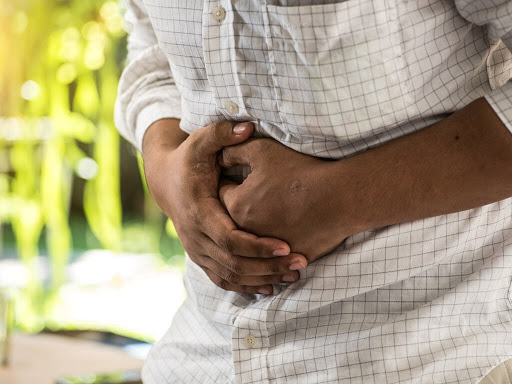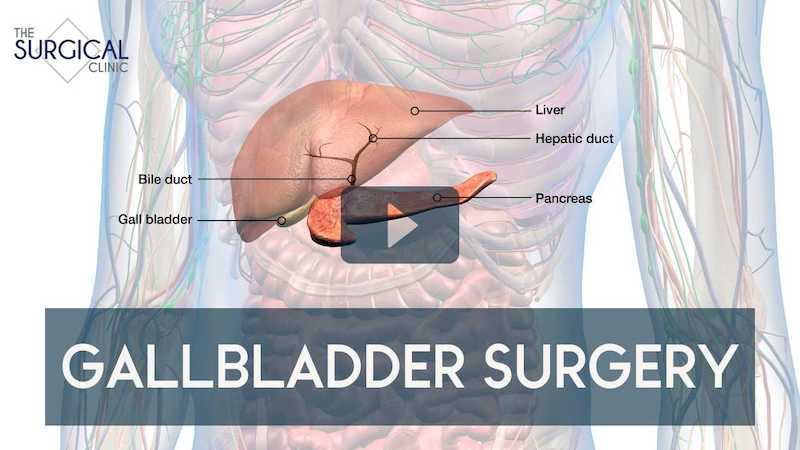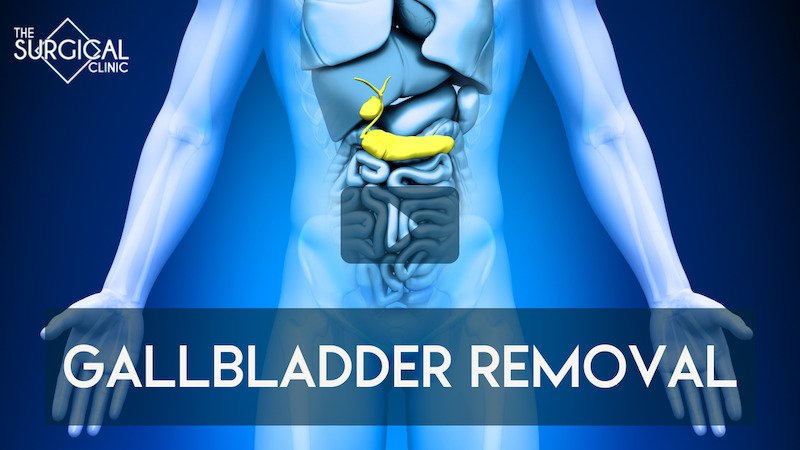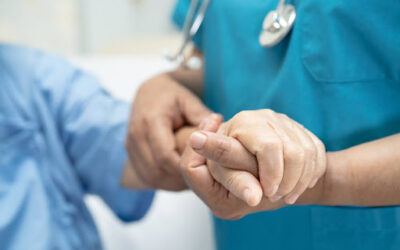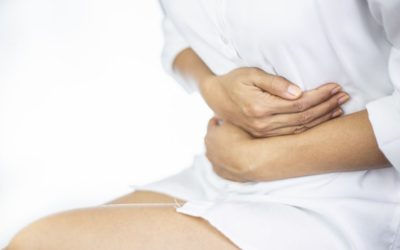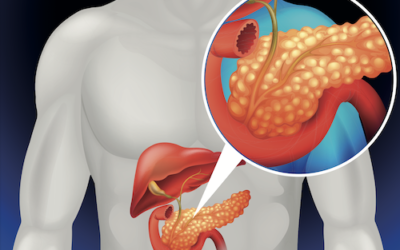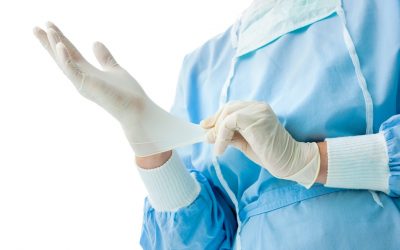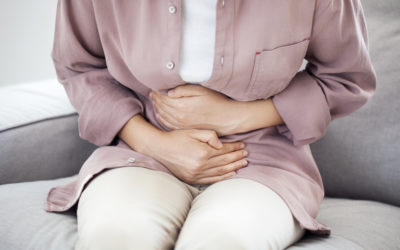What Is A Gallbladder Attack?
One of the most painful gastrointestinal problems is gallbladder attacks. These attacks occur when bile and minerals in the gallbladder form small stone-like deposits or gallstones. As a result, the gallbladder tries to pass the stones through the bile ducts and the stones tend to get stuck and cause anywhere from mild to severe pain.
Other Names for Gallbladder Attacks
A gallbladder attack, sometimes referred to as a gallstone attack, acute cholecystitis, or biliary colic, is another term for the intense pain that strikes when these stones block the normal flow of bile. If you experience sharp discomfort on the upper right side of your abdomen, it could be your gallbladder acting up under one of these aliases.
WHAT IS A GALLBLADDER, AND WHERE IS YOUR GALLBLADDER LOCATED?
The gallbladder is a small, green, pear-shaped organ in the upper right side of the abdomen near the ribcage. It is about 4 inches long and sits below the liver. To aid digestion and break down fat, the gallbladder stores a yellowish liquid called bile.
Gallstones form in the gallbladder when things in the bile, like cholesterol, harden. Sometimes gallstones can block the bile duct and cause gallbladder issues.
Note that some people may have small gallstones and pass them without an aggressive attack. Though when larger gallstones get stuck, they cause gallbladder attacks. Learn about the symptoms, treatments, and causes behind gallbladder attacks below.
WHAT DOES A GALLBLADDER ATTACK FEEL LIKE
Typically, a gallbladder attack feels like a sharp, gripping pain in the upper right or upper middle section of your abdomen that gets worse. Pain can last between twenty minutes to a few hours.
Gallbladder Attack Symptoms
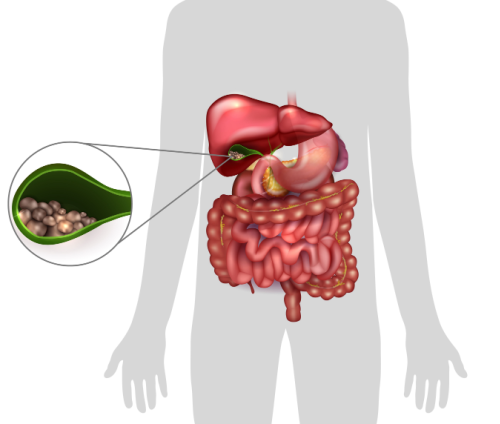 Gallbladder attacks usually occur after eating foods high in fat or cholesterol. After a fatty meal, the body attempts to release bile from the gallbladder for digestion, but cannot because of a gallstone blockage.
Gallbladder attacks usually occur after eating foods high in fat or cholesterol. After a fatty meal, the body attempts to release bile from the gallbladder for digestion, but cannot because of a gallstone blockage.
Gallbladder attack symptoms usually include:
- Pain lasting several hours
- Abdominal pain after eating
- Nausea or vomiting
- Fever or chills
- Lighter-colored stool
- Diarrhea
- Dark or brown-colored urine
- Jaundice, or yellow-ish skin or whites of eyes
The earliest warning sign of a gallbladder problem is sudden, sharp pain in the chest, back, or abdomen. The pain can be intermittent and mild or ongoing and severe.
Furthermore, the pain can become worse with deep breathing or eating, especially a fatty meal like steak. Neither passing gas nor pooping relieve the pain.
If the pain is severe and does not go away after a few hours, go to the doctor; if you cannot tolerate the pain, go to the ER.
Now, there are actually two subtypes of gallbladder disease that lead to attack-like symptoms. The first type is cholecystitis, and the second type is choledocholithiasis.
CHOLECYSTITIS
(koh-luh-si-stai-tuhs) Redness, swelling, or inflammation of the gallbladder due to blockage of the bile duct from excess bile production or gallstones. This disease can occur both chronically and acutely.
Symptoms include:
- Severe pain that starts suddenly in the upper right part of your abdomen
- Pain that radiates to the back or below your right shoulder blade
- Bloating
- Nausea
- Vomiting
- Chills
- Fever
- Sweating
- Abdominal cramping
- Jaundice (yellowing skin)
- Cholecystitis can also cause a yellowing of the whites of the eyes.
Consult with your doctor if you experience these symptoms repeatedly. They will carefully test your symptoms to eliminate the possibility of further infections, tumors, or blood vessel issues.
ACUTE CHOLECYSTITIS
The most obvious sign of acute cholecystitis is the sudden onset of intense pain near the upper right of the abdomen or under the right shoulder blade, which radiates outward. The pain gets worse with deep breathing as the diaphragm puts pressure on the liver, which then irritates the gallbladder further.
- Pain aggravated by deep breathing
- Fever
- Sweating
- Appetite Loss
- Jaundice
- An abdominal bulge
- Sudden onset of pain lasting several hours
CHOLEDOCHOLITHIASIS
In contrast to the previous condition, this type of vein disease occurs when a gallstone gets stuck in the bile duct. Most of the time, people with gallstones will not notice their passing. However, when a gallstone does get stuck, it causes abdominal pain typically associated with gallbladder disease.
Symptoms include:
- Pain in the upper right abdomen
- Fever
- Yellowing eyes
- Yellowing skin
- Appetite loss
- Nausea and vomiting
- Light, grey, or clay-colored stools
- Dark-colored or tea-colored urine
WHEN TO GO TO THE HOSPITAL FOR A GALLBLADDER ATTACK
If these gallbladder attack symptoms last more than two hours or you have a fever, you may need to go to the hospital for emergency medical care. Gallbladder attack symptoms are often excruciating and even replicate symptoms of heart attacks and appendicitis. Severe pain needs to be checked out to identify the problem and reveal inflammation or infection.
SYMPTOMS OF GALLBLADDER ATTACKS
Because everything in your body is connected, when one organ isn’t working properly, it will cause other problems. If you notice any of the following symptoms, you should contact your doctor immediately.
FEVER
If you notice sudden fevers after a gallbladder attack, you should seek help immediately. Fever can be a sign of inflammation of the gallbladder or an infection. If left untreated, a gallbladder infection can spread to other parts of the body and cause serious damage to your body.
JAUNDICE
With your gallbladder backed up, the excess bile can work its way into your bloodstream. As a result, patches of your skin will turn yellow, and even the whites of your eyes will begin to yellow.
LOSS OF APPETITE
The bile produced by the gallbladder breaks down fats during digestion. However, when the gallbladder becomes blocked, the body can’t break down fats. As a result, you may feel full or simply experience a loss of appetite.
NAUSEA AND VOMITING
Furthermore, because your body can’t break down fats with a blocked gallbladder, you may feel nauseous or experience vomiting. The pain from a gallbladder attack could also add to these symptoms.
DIARRHEA, DISCOLORED STOOLS, AND URINE
Frequent bowel movements, light-colored stools, and dark-colored urine can all be signs of gallbladder problems. Light-colored stools, especially, are a sign that gallstones are blocking the bile ducts; the light color is a result of a lack of bile in the stool. Depending on the type of gallstone you have, you may or may not feel them passing or see them in the toilet.
WHAT COMPLICATIONS CAN ARISE FROM A GALLBLADDER ATTACK?
- Liver Problems: When the ducts are blocked, it can cause bile to back up in the liver. This can lead to liver complications, and one visible sign may be jaundice. You’ll notice this as a yellowing of your skin and the whites of your eyes.
- Pancreatic Issues: Sometimes, gallstones obstruct the pathway to the pancreas, which is crucial for producing enzymes necessary for digestion. This blockage can result in gallstone pancreatitis, a condition that mirrors the pain of a gallbladder attack but may also include discomfort in the upper left abdomen.
Each of these complications requires prompt attention to prevent further health issues. Seek medical advice if you experience symptoms that suggest liver or pancreatic concerns.
WHAT ARE THE CAUSES OF GALLBLADDER ATTACKS & GALLSTONES?
Gallstones are the cause of gallbladder attacks. Gallstones are small, hard deposits that form in the gallbladder, largely due to diets rich in processed and fatty foods, which are prevalent in Western countries.
However, there are many factors that can cause gallstones to form. For example, high levels of cholesterol in the bile can lead to the formation of gallstones. High levels of bile salts, bilirubin, and calcium also contribute to the build-up of gallstones. Additional risk factors include:
- Obesity
- Diabetes
- Being over the age of 60
- A family history of gallbladder disease
- Crohn’s Disease
- Cirrhosis
Other risk factors include taking medications containing estrogen, as well as having a disease that affects how your body absorbs nutrients. If you have any of these risk factors, talk to your doctor about what you can do to mitigate these risks.
It’s important to note that not all gallstones will lead to a gallbladder attack. In fact, most gallstones don’t cause symptoms, and you may not even know you have them.
Gallstones can become a problem if they become large, numerous, or sticky, to the point that they block the gallbladder duct, which can lead to a gallbladder attack.
HOW LONG DOES A GALLBLADDER ATTACK LAST?
Usually, a gallbladder attack will last anywhere from 15 minutes to a few hours. The length of a flare-up largely depends on the size of the gallstone.
HOW TO PREVENT A GALLBLADDER ATTACK
It’s also possible to prevent more gallbladder attacks with self-care and certain medications. One effective method is to adjust your diet to avoid excessive intake of fatty foods. This approach not only helps in managing the condition but also in preventing the accumulation of gallstones, a common issue linked to gallbladder problems.
Adopting dietary practices similar to the Mediterranean diet, renowned for its benefits in lowering high cholesterol levels, can be particularly beneficial. By integrating these healthier eating habits, you can significantly reduce the risk of gallbladder complications and improve your overall well-being.
MEDITERRANEAN DIET
The Mediterranean diet is a sustainable way to eat, based on the traditional foods and drinks of Mediterranean countries. It emphasizes a variety of nutrient-dense foods, such as plant-based foods, healthy fats, and lean proteins. The basics of the Mediterranean diet include:
- fruits and vegetables
- whole grains
- nuts and seeds
- legumes, like chickpeas
- fish and seafood for omega-3 fatty acids
- chicken and eggs
- dairy, like feta cheese and Greek yogurt
- herbs and spices, used to replace too much sodium
- red meat, occasionally
- red wine, in moderation and often with meals
This diet is known for its health benefits, including reduced risk of heart disease, improved brain function, and better weight management.
Gallstones come in two primary forms, each with distinct characteristics and causes.
Cholesterol Gallstones
These are the most prevalent type of gallstones. Composed primarily of cholesterol, these stones are usually white or yellow in color. Cholesterol gallstones form when there’s an imbalance in the substances that make up bile, often due to excessive cholesterol.
Pigment Gallstones
Pigment gallstones are darker, often brown or black. Their formation is linked to an excess of bilirubin in the bile—a pigment that contributes to the color of the liver’s waste products. Conditions that lead to increased bilirubin, like liver cirrhosis or certain blood disorders, often contribute to the development of these stones.
Each type of gallstone can cause similar symptoms and complications, particularly when they block the bile duct, leading to significant discomfort and medical emergencies.
TREATMENTS FOR GALLBLADDER DISEASE
DIAGNOSING GALLBLADDER DISEASE
There are several different types of treatments available. The level of treatment will depend on the severity of your symptoms. In order to diagnose and treat gallstones, your doctor will use one of the following methods to assess the extent of your symptoms.
- Ultrasound
- CT Scan
- Endoscopic Ultrasound
- Blood tests
- Imaging Tests
These diagnostic tools are essential to determine if your gallbladder pain is due to gallstones or another underlying condition.
GALLBLADDER TREATMENTS
If you deal with periodic gallbladder attacks, you can take pain relief medication and, possibly, nausea relief medication. Some medications are intended to prevent more gallbladder attacks, in addition to the self-care discussed earlier. An oral medication called ursodeoxycholic acid can help dissolve cholesterol gallstones, particularly small ones, but it may take months and requires ongoing use to prevent recurrence.
However, for larger gallstones or more severe symptoms, you will likely need surgery. In this case, you may be referred to a gallbladder specialist at a general surgery center.
The main surgical procedure used to treat gallbladder problems is called a cholecystectomy. Generally, this procedure is performed laparoscopically, but can also be performed as an open procedure. The difference between an open and laparoscopic gallbladder removal is the intensity of the procedure.
Open surgeries require more invasive processes to remove the gallbladder. In contrast, a laparoscopic procedure uses minimally invasive devices inserted into small incisions to remove the gallbladder. Regardless of which procedure you receive, you will be under general anesthesia for your comfort and to keep you pain-free.
STOP A GALLBLADDER ATTACK WHILE IT IS HAPPENING
Gallbladder attacks can be so painful that many people end up in the emergency room. While nothing can be done to completely stop the attack while it is happening, there are ways to relieve some of the pain.
- Apply a heated compress to the area for 10-15 minutes to relieve gallbladder pain
- Try sipping menthol or peppermint tea, which has pain relief properties
- Sip apple cider vinegar to stop inflammation and relieve pain
- Take a magnesium supplement to ease gallbladder spasms
- Acupressure to the area of the chest opposite the gallbladder
If pain persists, seek medical attention. You may need medication or surgery.
It is possible to pass a gallstone. When this happens, the gallstones are small and may exit the gallbladder through the bile ducts and move on into your intestines. Gallstones are excreted in your stool, unlike kidney stones, which are expelled through the urinary tract. You may notice tiny gallstones in the toilet after a bowel movement. Gallstones are usually diamond-shaped and yellowish, but can come in any shape, size, or color.
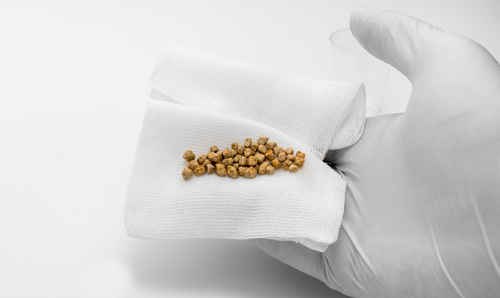
GALLBLADDER SURGERY RECOVERY
Generally, patients of laparoscopic surgery, or keyhole surgery, can leave the hospital the same day of their procedure. However, after open gallbladder removal surgery, patients usually stay in the hospital for 3-5 days.
Your doctor will give you instructions for your recovery. Usually, this includes avoiding heavy lifting or high levels of activity.
Can Gallbladder Symptoms Be a Sign of Other Problems?
The short answer is yes, gallbladder symptoms can be a sign of other problems also. Symptoms of gallbladder disease are similar to symptoms of gastroesophageal reflux disease (GERD). Alternatively, gallbladder attacks may be confused with heart disease.
In fact, pain in the upper right side of your abdomen—the classic sign of a gallbladder attack—can actually be caused by a variety of other conditions. These include:
- Heartburn (GERD)
- Appendicitis
- Hepatitis (liver inflammation)
- Peptic (stomach) ulcer
- Pneumonia
- Hiatal hernia
- Kidney infection or stones
- Liver abscess
- Pancreatitis (inflammation of the pancreas)
- Shingles infection
- Severe constipation
Gallbladder pain typically stands out as a sudden, sharp pain that may last from minutes to hours or as a dull, cramping ache that quickly worsens in the upper right abdomen or just below the breastbone. It often doesn’t change when you move, and can be severe enough to make it hard to sit still. Sometimes, the pain radiates to your back between the shoulder blades or your right shoulder.
Because these symptoms can overlap with other serious issues—like heart problems or infections—it’s important to consult your doctor to sort out the exact cause and get the right care.
Understanding the Outlook After a Gallbladder Attack
Experiencing a gallbladder attack can be unsettling, but understanding what’s ahead can ease some concerns. If you’ve already had an attack, it’s crucial to consult your healthcare provider about strategies to prevent future occurrences. In some cases, they may recommend gallbladder removal surgery, which fortunately doesn’t disrupt normal digestion.
Factors Beyond Control
Gallstones might form despite a healthy lifestyle. Here’s why:
- Genetics: Family history plays a significant role in susceptibility.
- Gender: Women are generally more prone due to higher estrogen levels, which can affect cholesterol.
- Age: Individuals over 40 are at a greater risk as cholesterol levels naturally rise.
- Heritage: Some ethnic groups, such as Native Americans and Mexicans, have a higher incidence rate.
Health Conditions That Elevate Risk
Certain medical conditions can increase the likelihood of experiencing gallbladder issues, including:
- Type 1 and Type 2 Diabetes
- Crohn’s Disease
Proactive Steps
If there’s a family history of gallstones or if you possess any risk factors, engaging in a dialogue with your doctor is key. An ultrasound can be a valuable diagnostic tool to detect gallstones.
Post-attack, adherence to scheduled medical appointments is imperative, even if initial treatment wasn’t necessary. Keeping these follow-ups ensures your health is monitored and managed appropriately
Find A Gallbladder Surgeon In Nashville, Tennessee
Many of the general surgeons at The Surgical Clinic have been trained in gallbladder surgery. If you experience frequent gallbladder attacks, come visit one of our general surgeons in Nashville, Smyrna, Lebanon, Mt. Juliet, Hermitage or Murfreesboro.
Our surgeons offer professional and expert consultations to help you get the best care possible. Call The Surgical Clinic near you today and set up your appointment.
Call The Surgical Clinic
Schedule a consultation for gallbladder surgery or gallbladder treatment in Tennessee.
Gallbladder Disease & Surgery
Gallbladder disease is a term used for several types of conditions that affect the body’s bile system. This system includes the liver, gallbladder, and bile ducts. Dr. Drew Reynolds of The Surgical Clinic goes over the disease process and nature of gallbladder surgery.
General surgeons in Greater Nashville

Dr. John Boskind
General Surgeon
SUMMIT

Dr. Mariana Chavez
General Surgeon
Downtown

Dr. Patrick Davis
General Surgeon
SOUTHERN HILLS

Dr. Gretchen Edwards
General Surgeon
DOWNTOWN

Dr. Alex Fruin
General Surgeon
SUMMIT

Dr. James Griscom
General Surgeon
NASHVILLE

Dr. Mark Hinson
General Surgeon
COLUMBIA

Dr. George Lynch
General Surgeon
NASHVILLE

Dr. Clinton Marlar
General Surgeon
SKYLINE

Dr. Willie Melvin
General Surgeon
SMYRNA

Dr. Chad Moss
General Surgeon
COLUMBIA

Dr. William Polk
General Surgeon
NASHVILLE

Dr. Drew Reynolds
General Surgeon
ST. THOMAS WEST

Dr. Joshua Taylor
General Surgeon
SMYRNA

Dr. Davidson Oxley
General Surgeon
COLUMBIA

Dr. Tyson Thomas
General Surgeon
ST. THOMAS WEST

Dr. John Valentine
General Surgeon
HENDERSONVILLE

Dr. Patrick Wolf
General Surgeon
ST. THOMAS WOLF
GALLBLADDER SURGERY AND GALLBLADDER ATTACKS ARTICLES
What To Expect When You Have HPB Surgery
Conditions that affect the liver, pancreas, or...
Common Types of General Surgery Procedures
Even though general surgery covers common...
Gallbladder Disease: Types, Risks, and Treatments
What is Gallbladder Disease? Gallbladder disease...
Hepato-Pancreato-Biliary Surgery & Pancreas Cancer
Hepato-pancreato-biliary (HPB) surgery...
What to Expect After Gallbladder Removal Surgery
Cholecystectomy, or surgical gallbladder...
Laparoscopic Gallbladder Surgery: An Option for Gallstone Disease
Laparoscopic gallbladder surgery is a minimally...

